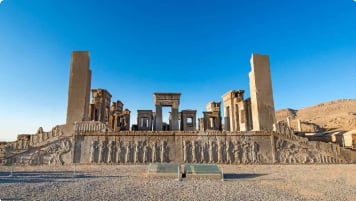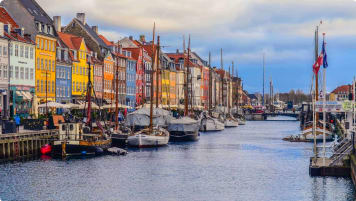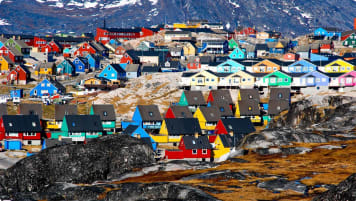Viking History of Greenland
The Vikings explored the Arctic circle for 5 centuries reaching Greenland as well as North America. Learn about the history of the Vikings before enjoying a small group tour for senior couples and mature solo travellers.
6 Oct 21 · 8 mins read

Viking History of Greenland
“Hannibal had his elephants. Genghis Khan had his horses. Churchill had his bomber-planes. And the Norse had their ships.” (Barraclough, ER 2016, Beyond the Northlands, Oxford University Press, Oxford)
One of the most daunting and hazardous sea voyages in Viking history during the Middle Ages (and the Viking Age) was heading west to Greenland crossing the Atlantic Ocean in their longship(s). The sailing conditions were dangerous due to harsh winds, high tides with tumbling walls of water, frost and snow and the impassable layer of the Greenland ice sheet that dominates the east Greenland coastline up in the Arctic circle.
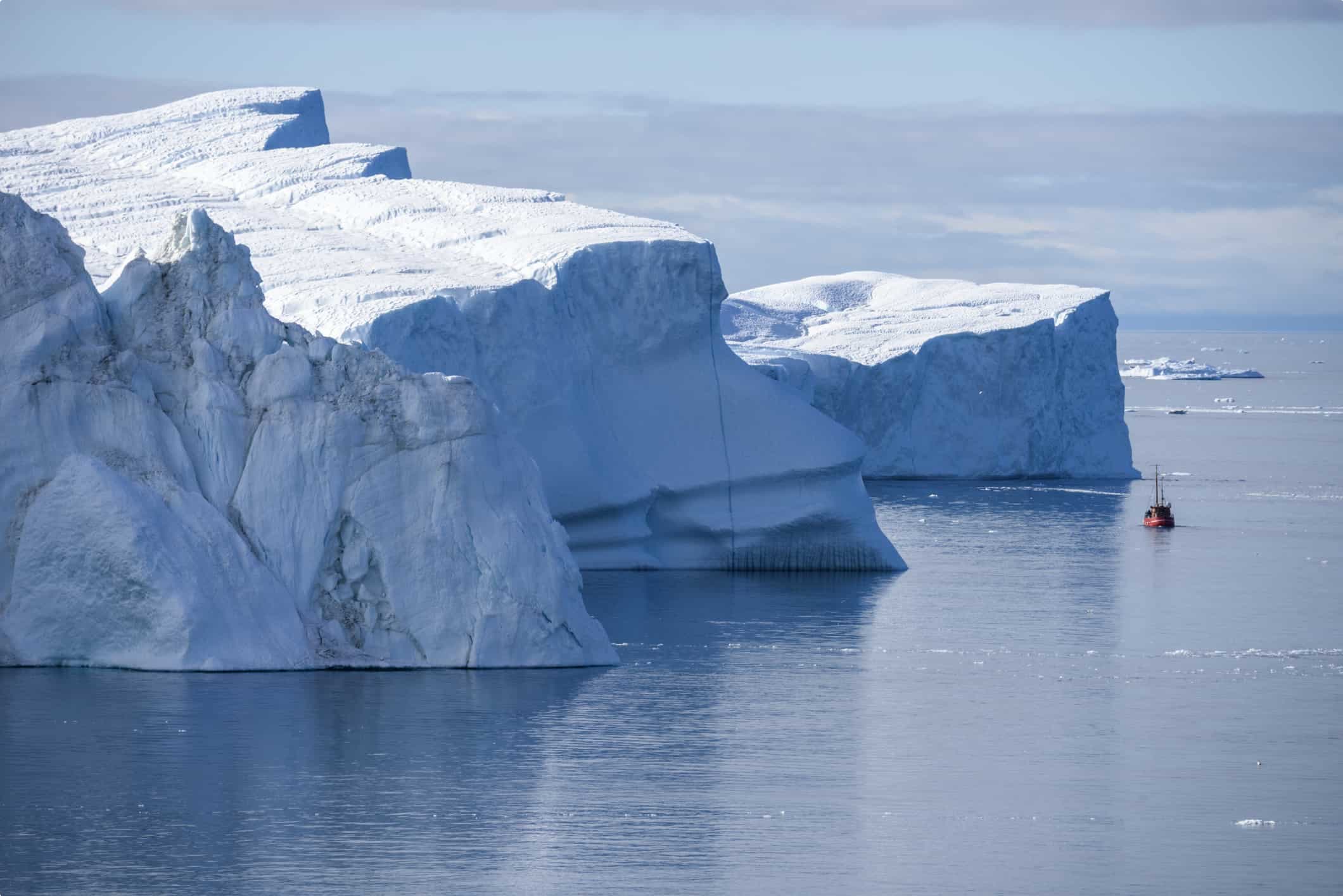
Odyssey Traveller offers the opportunity to see on small group tour of the Viking History of Greenland for senior couples and mature solo travelers the glacier created fjord where the viking settler attempted in west Greenland to create a place to live within the Arctic circle.
Considering these facts, we must assume that many Viking ship(s) never made it to the shores of disko bay west Greenland the location of a early Viking settlement. Everyone on board such a treacherous expedition across the North Atlantic including Viking woman and children perished at sea. The Norse Greenlanders where often temporary visitors, returning to Vinland at the end of the summer via the Faroe islands.
The Icelandic saga book.
Landnámabók – which is a medieval Icelandic written work also known as the “Book of Settlements” – describes in considerable detail the settlement of Iceland by the Norse settler (Greenland‘s vikings) in the ninth and tenth centuries. The book traces important events of the Viking world in general, Viking society, family history and is a fact-based record compared to many of the Viking sagas (Icelandic Sagas) that can be more Norse Mythology than reality. It notes that the first big expedition from Iceland to Greenland in 985 ended in 9 of the 25 ships not reaching the safe shores of Greenland. Despite the risks and difficulties that travelling to and settling in Greenland posed, this Viking period of Norse settlement lasted for about 450 years, many generations of Norse families made a home on the island.
Their main Viking settlement(s) – the Eastern Settlement near present-day Qaqortoq and the Western Settlement near present-day Nuuk – had flourishing Viking farm(s) with livestock and irrigation systems for their fields. The Eastern settlement was much bigger with approximately 250 farmsteads (around two or three thousand inhabitants compared to the Western settlement’s 500) and was spread all over the area that we now know as South Greenland. So, we can’t imagine these settlements as a Viking village but rather as large, wide-spread community settlements. The Viking settler hunted seal, reindeer, arctic hare and foxes, ptarmigan (partridge like grouse of cold regions), whale and the precious walrus tusk ivory. The Norse Greenlanders did well at building a home away from home and created a Viking society with its own laws, churches and establishing the last bastion of medieval Europe, looking over to the western horizon, at what later became modern-day Canada. Archaeological evidence shows that the Viking colony Hvalsey (“Whale Island”; Greenlandic Qaqortukulooq) located near Qaqortoq is the site of Greenland‘s largest, best-preserved Norse ruins including the Hvalsey church in the area known as the Eastern Settlement (Eystribyggð). In 2017, it was inscribed on the UNESCO World Heritage List and part of the Kujataa Greenland site and is a must see when you visit Greenland .
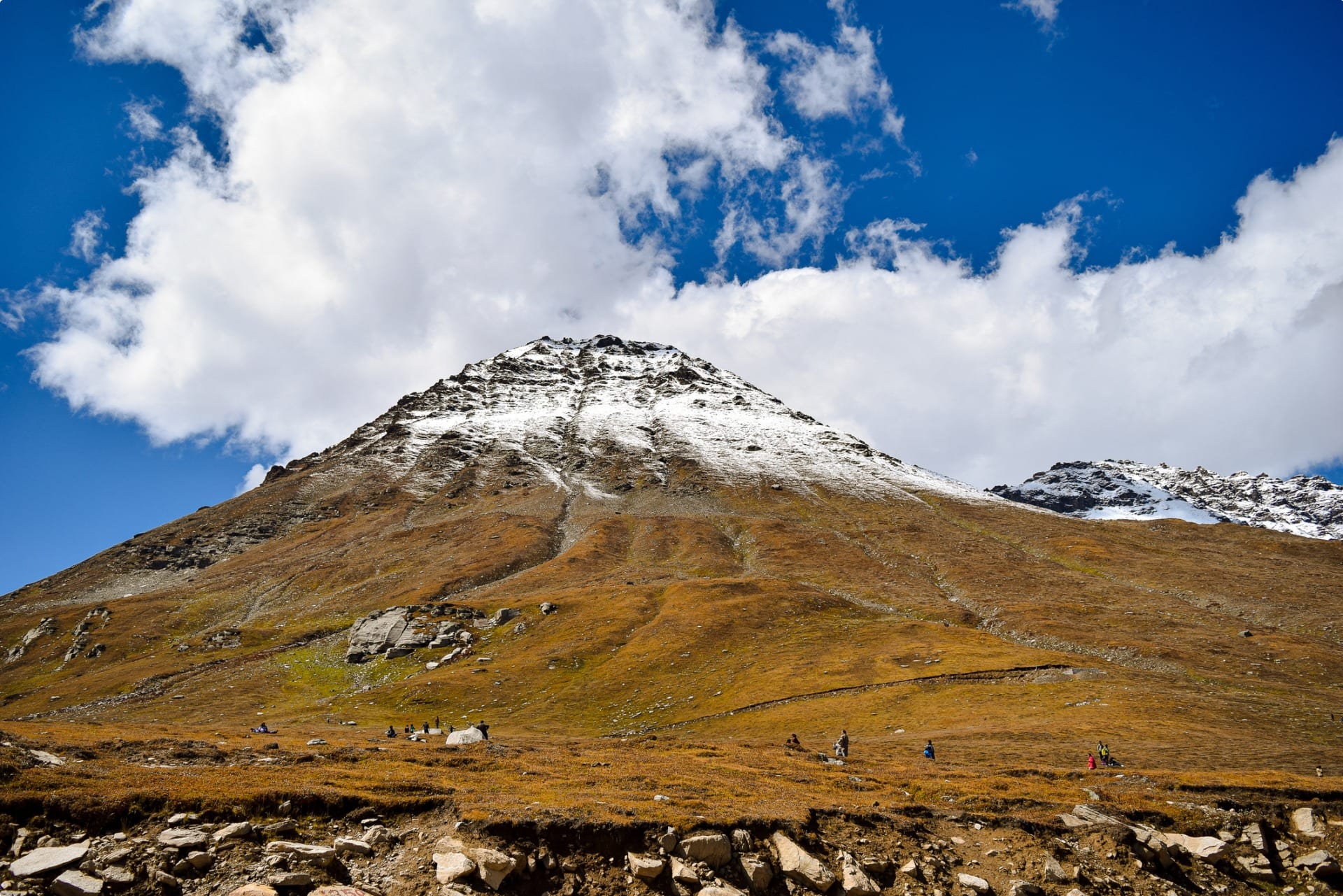
Europe furthest outpost
Between 984 and an unknown year in the 1400s, the Norse Viking community in Greenland represented European civilisation’s most remote outpost. The ruins are known today for their fertile soil and lush greenery and have become the focus of not only tourists and archaeologists but also for one or two crafty businessmen. While fine dining in Nuuk you might be presented with vegetables that have been grown on top of a Norse waste dump – bon appetite.
Many of us have heard the tale of the troublesome Erik the Red, who found his way to Greenland after being exiled from Norway and Iceland for murder. He was the first jarl (chieftain) of this Viking society in Greenland. Erik led the settlement of Greenland by the Vikings. It is said that he named Greenland somewhat misleadingly (let’s call it early days Viking marketing) to persuade his countrymen to settle there – surprisingly it worked, and his original voyage in 984 officially marks the start of the Viking era in Greenland. The Norse joined the Inuit on the island who were the first people arriving in Greenland and who immigrated from the present- day Canadian island of Ellesmere. The first people to set foot in Greenland arrived around 4-5000 years ago from the North American continent via Canada when the sea ice formed in the narrow strait at Thule in northern Greenland. Many different people of Inuit culture migrated to Greenland in several waves with the last immigration being the Thule culture in the 9th century and from which today’s Greenland population descended from.
Despite the fact that the Norsemen built a thriving society in Greenland that lasted for over 400 years, the reason for their disappearance remains one of Greenland‘s greatest mysteries. There are many theories but there’s no consensus on how and why the whole society vanished at some point in the 1400s. When Danish-Norwegian Lutheran missionary Hans Edge came to Greenland in 1720 hoping to convert his Nordic brothers and sisters, he found that there were no Norse left in Greenland and it was assumed that a historical drama in Viking history had occurred.
The life of the Norse living in Greenland was a fine balance between exploration and survival – determined by external circumstances that were out of control for the Viking settler such as the weather and the availability of natural resources. Back in Denmark , the Faroe Islands, Norway or Iceland, Norse society relied on livestock farming, the production of dairy products like butter, cheese and skyr (Icelandic yoghurt), and on hunting depending on where one originated from. Conveying this way of life to a climate and environment as harsh and remote as Greenland required the development of a complex, autonomous economy. A Viking warrior in this part of the world wasn’t here to complete another Viking raid or Viking attacks on locals but had to adjust to complex planning, set structures and adapting to the ever-changing challenges of the new world that left little room for luxuries. When the long brutal winter set in, a farming disaster, any diseases, or the lack of contact with parts of Northern Europe and other Scandinavian countries could send their sensitive society into a downward spiral and wipe out the settlements. The Norse Greenlanders relied on Norway and Iceland for many of their basic needs to survive in this harsh island world: grains, metal for tools and weapons, wood for building – all these items were delivered on ships. A co-dependency that might drove the beginning of the end of the Viking era in Greenland.
Newer resources bring to light the theory that the Vikings weren’t farmers that hunted, as was believed until recently by generations of scientists and historians, but rather were hunters that farmed. That indicates that the reasons why the Viking disappeared from Greenland might be a little different than we had thought until now.
Horned helmet or pitchfork, rune stones or Icelandic sagas?
It could have been a peaceful withdraw and exit from their colonies rather than a bloody end initiated by the Inuit. The animals the Norse hunted, ate and used head to tail for all their needs are still present in the Greenlandic landscape today – seals, reindeer and arctic foxes still roam the slopes of the ice sheet fjords, grassy hills and drink the crystal-clear water of Greenland‘s lakes. Hunting – for both supporting their food supplies as well as trade to other parts of Europe – was an essential part of the Viking’s Greenlandic economy. For Greenland‘s Norse Viking culture the lifestyle in Greenland were naturally more in favour of a Viking trader than a Viking raider. The Western Settlement had his disadvantages with regards to the quality of farmland, the longer winters and being less connected to Iceland and Norway – but it was the perfect vantage point for the northern hunting grounds. Several hundred kilometres up north lays the region that the Norse called Nordrseta (“Northern Seat”) – a place made up of snow and icebergs. Today, the region is regarded as Disko Bay including the majestic Ilulissat Ice fjord, a UNESCO World Heritage site located 240 kilometres north of the Arctic Circle. The very iceberg that sunk the Titanic in 1912 is believed to have come from the west coast of Greenland and most likely Ilulissat ice sheet itself.
The Viking history is frozen
Greenland‘s medieval past seems frozen in time – well preserved ruins are the result of a culture that honours the land that it walks upon and a climate with permafrost, polar ice cap and Greenland‘s soil that preserved the Viking’s life in an almost surreal way. A region that could easily be compared to Pompeii with its eerie preservation of human life and everything that belongs to it, carving a picture of this lost medieval world. On the other hand, we know very little about the Norse of Greenland, compared to their Icelandic kin who seemed to have an actual need to write things down, there is almost no written evidence.
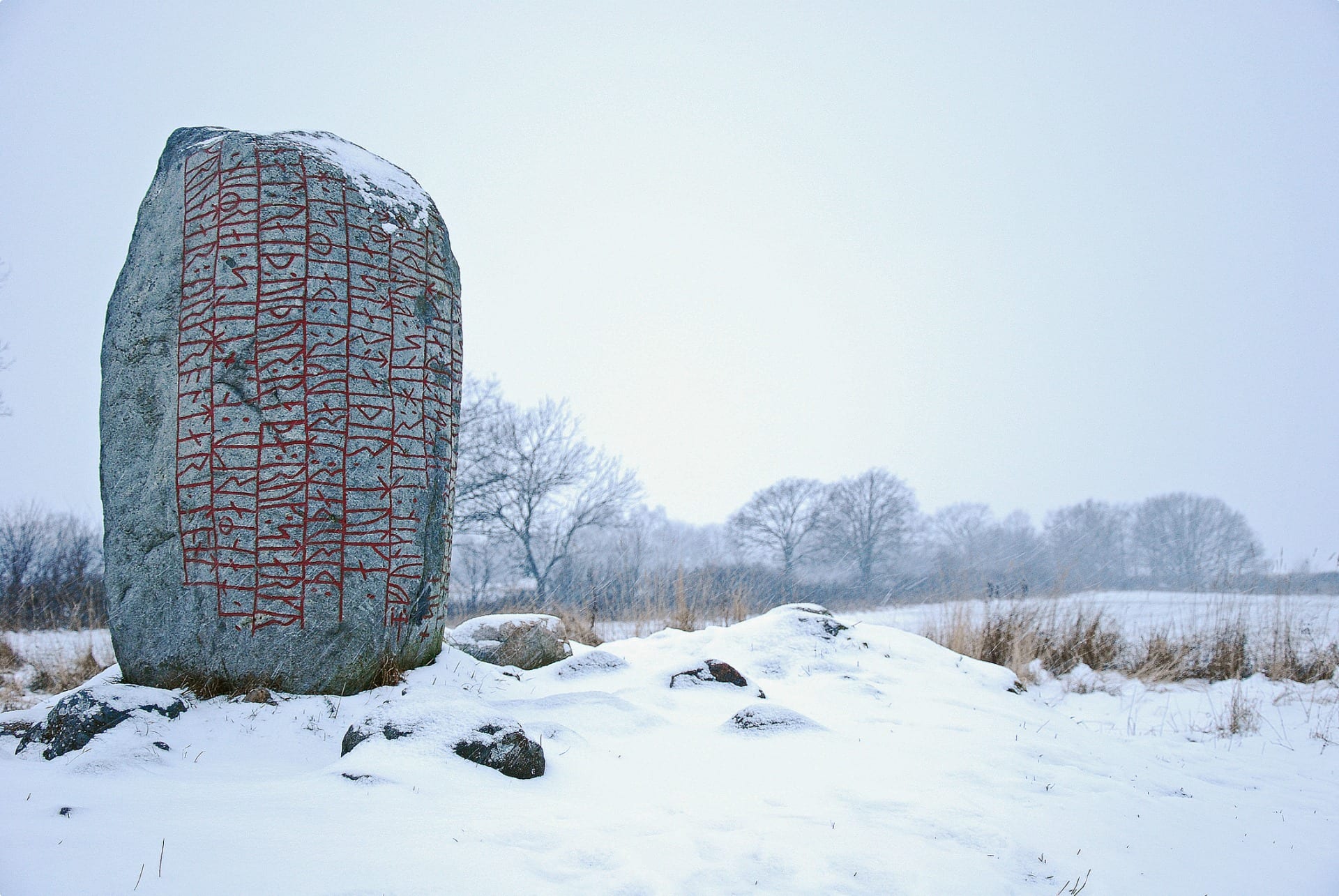
Around 200 runic inscription(s) were found but those give little clues and are of less archaeological value compared to written parchments that often tell a real story. To gain an insight into the doings of the Vikings in Greenland, the sagas are the only relevant source and there are two that are well known: Saga of Erik the Red and Saga of the Greenlanders. Together they are known as the Vinland Sagas. After being exiled from Norway for murder and for the same reasons from Iceland, Erik jumped on a ship and explored Greenland. At least that is what two manuscripts from the Saga of Erik the Red state. In reality, it wouldn’t have been such a walk in the park as it is written in typical understated Icelandic saga fashion. It is estimated that it took Erik 3 years to sail up and down the coast of Greenland‘s west coast discovering enormous fjords, stunning pastures, vast wastelands, mountains and glaciers. Only stopped by the winter’s ice, resuming his voyages every summer in search for fjords with suitable farmland attached to them. Places that could sustain a European-Style Norse society. After 3 years, Erik returned to Iceland, got into another brawl and left with friends, family and other followers that joined him in his conquest to settle in Greenland.
The conditions for making a new life in a new land were good when the first settlers took off. The climate was warmer and drier during the first centuries of the settlement due a phenomenon recognised as the Medieval Warm Period. That made for lush, green pastures and a blooming vegetation that was inviting and promising. This warmer period was followed by what is today known as the Little Ice Age, starting at the beginning of the 13th century and might contributed to the withdraw of the Vikings from Greenland. The colder weather resulting in worsened farming conditions and the lack of access to ships reaching the shoreline due to endless ice.
A small group tour of the Viking history of Greenland requires planning
Besides in the small towns, Greenland has almost no roads, and a traveller in the quest of stepping into the footsteps of the island’s long-gone but not forgotten past, might be required to resort to other means of transport. Boats, horses and helicopters to name the most accessible ones, are a modern-day explorer’s best bet in finding the treasures of Greenland‘s past. Exploring the coast can be done via the ice-breaker ferry, run by the Arctic Umiaq Line. It is said that Erik’s sons and their families sailed from Greenland to the fringes of the North American continent.
To proof that point, the remains of an 11th-century Viking settlement were found and identified as evidence of the first European presence in North America. L’Anse aux Meadows is an archaeological site of an old Norse settlement dating to 1000 on the northernmost tip of the island of Newfoundland in the Canadian province of Newfoundland and Labrador. Aux meadows is today an UNESCO World heritage site.
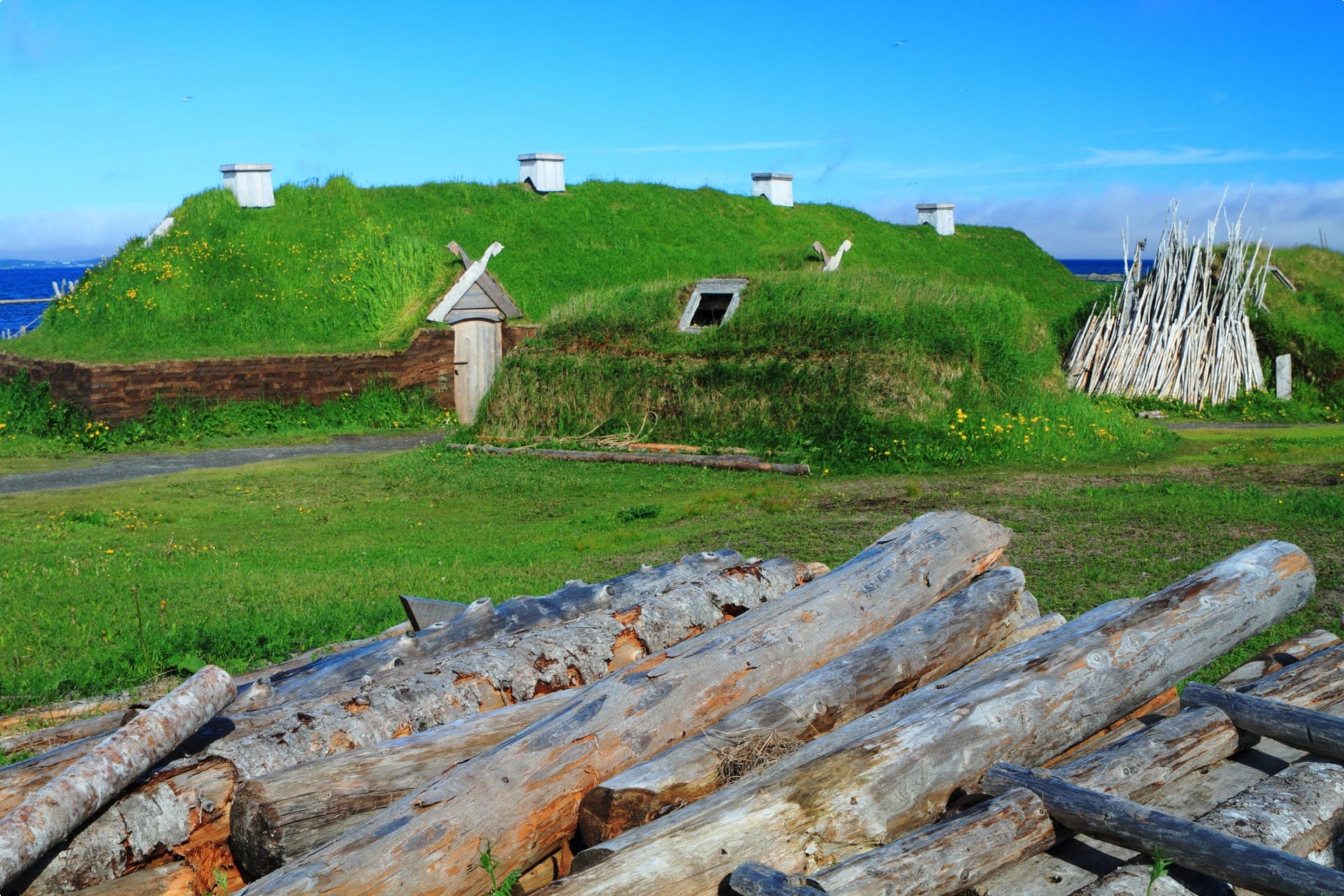
A small group tour is the best way to discover the rich Viking history in Scandinavia and beyond. There are specialised Viking tours that follow the footsteps of long forgotten Viking men, expand remarkable Viking heritage, encourage a closer look at a runic inscription and a traveller might even get to see the marvellous northern lights.
As John Lennon famously said in “A Hard Day’s Night” – “How did you find America? Turn left at Greenland.” Lucky, we have better navigation systems these days. Westward Ho!
Related Articles
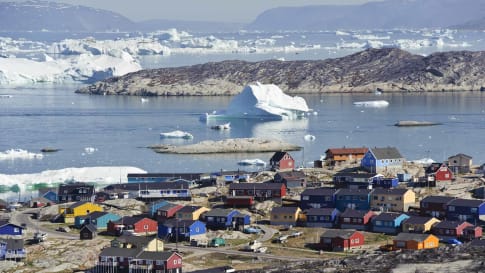
Ilulissat, Greenland
Greenland’s Avannaata region, which covers the town of Ilulissat, is as big as France but only has 11,000 people. It is said be home to almost as many sled dogs as people.
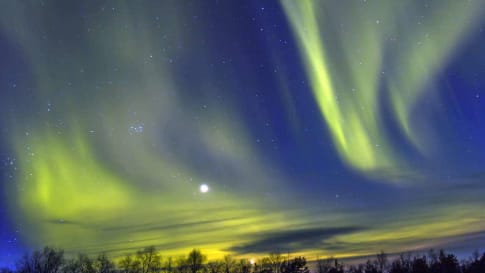
Northern Lights
The science of the Northern Lights Although many are more familiar with the Northern Lights, the natural phenomenon is not exclusive to the Northern Hemisphere. The polar lights are caused by solar activity. When there…
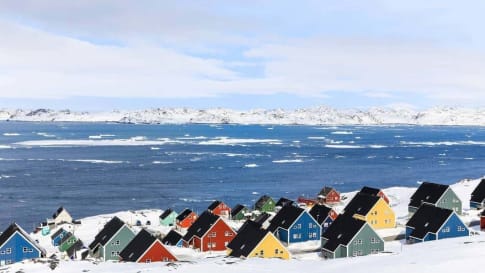
Nuuk, Greenland
Nuuk is an incredible city to visit, a small but cosmopolitan city with modern conveniences–gourmet dining, beautiful boutique fashion shops, apartment blocks–that still also retains its centuries-old indigenous roots.
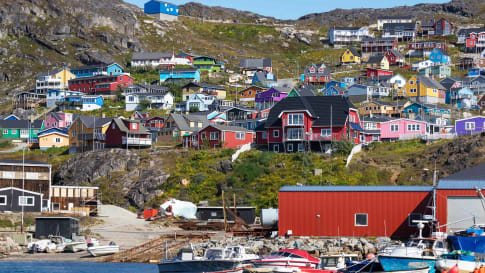
Qaqortoq, Greenland
Visiting Greenland as a member of a small group package tour for mature and senior travellers. The group of couples and solo travellers spend time in Qaqortoq and Nuuk, Greenland. Greenland is an extension to the Iceland small group tour. The group often witnesses the Northern light display in this part of the arctic circle.

Sami culture within the Vikings
Article about the Sami culture of the Arctic circle for small group educational tours for senior couples and mature single travellers interested in learning about the Vikings and their journeys into the Atlantic and south across Russia.

The Arctic Circle
The Arctic Circle is the most northernly major circle of latitude, at approximately 66°30′ N. It marks the area within which, for one or more days each year, the Sun does not set (June 21) or rise (December 21), and the length of continuous day or night increases northward.
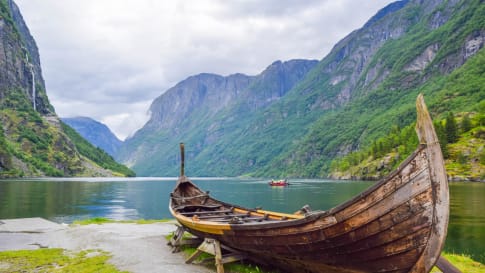
The Vikings
Vikings explored, pillaged, settled and traded their way in 300 years across the North Atlantic in the Longships to Iceland and Greenland or south through Europe/Russia to Istanbul and Persia. Learn more on a small group educational tour for senior couples and mature solo travellers interested in Viking history.
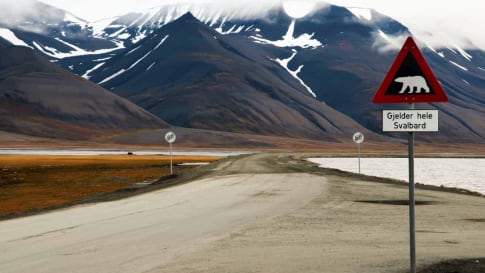
Understanding Greenland
Greenland recognises the devastating effects of climate change and continues to push for responsible and sustainable tourism.
Related Tours
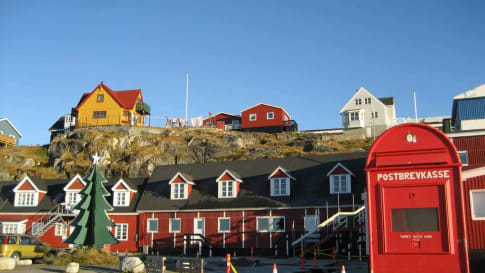
4 days
Sep, MayDiscover Greenland | Small Group Tour for Seniors
Visiting Greenland
Greenland is the largest island in the world, the majority of it lies above the Arctic Circle, and it is part of Denmark. Few places are quite so difficult to reach, we fly from Reykjavik to Nuuk. During this small group tour we have ensured that our travellers gets to this conversation-stopping land and, while we are there we obtain the most comprehensive overview of this vast landmass. We visit during the summer, experiencing the burst of seasonal flora, which caused the early voyagers to name it Greenland.
From A$6,450 AUD
View Tour
17 days
May, SepIceland cultural and wilderness small group tour
Visiting Iceland
Our escorted tour gives guests an insight into the history of this Icelandic nation. Travelling as a small group, our daily itineraries explore the Jokulsarlon Glacier Lagoon and others, national parks and majestic waterfalls as we learn about Iceland’s natural heritage and its Viking past from experienced local guides. There is a single supplement for solo travellers.
From A$18,995 AUD
View Tour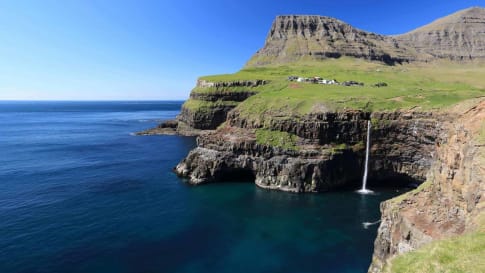
5 days
Apr, SepFaroe Islands Tour
Visiting Denmark
Few European tour companies offer small group journeys to the Faroe Islands. This five-day small group tour designed for mature couples and solo travellers. Local guides take you on trips off the beaten path to visit some of the islands' most stunning sights and to explore the capital of Tórshavn.
From A$7,250 AUD
View Tour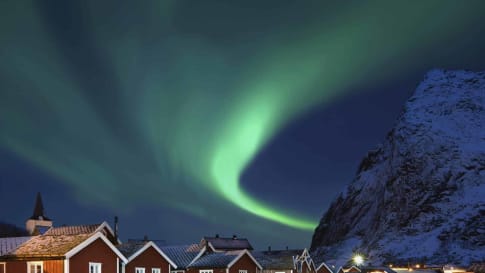
10 days
Oct, JanNorthern Lights Small Group tour | Visit Norway and Finland
Visiting Finland, Norway
Odyssey's small group tour following the Northern Lights allows you to experience serene snow-covered Arctic landscapes. Throughout our journey guides and specialists will outline the history of this stark region and the nature of the peoples who wrested their living from it. A unique opportunity to view this natural phenomenon travelling as part of a small group.
From A$9,625 AUD
View Tour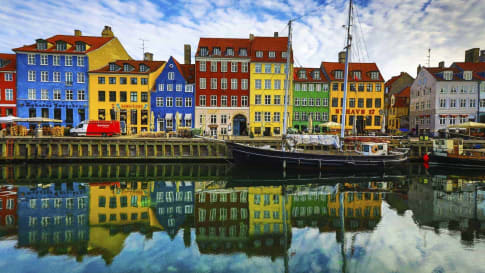
13 days
Jun, SepScandinavia tours for mature travellers
Visiting Denmark, Norway
Uncover on a small group tour for couples and solo travellers, a Viking past and view of the world’s biggest fjords on this journey through Scandinavia. In low-lying Denmark our small group journey takes us to visit the Zeeland, the sea land, and our program includes the vibrant capital of Copenhagen. In Norway we travel through endless forests, skirting great fjords to Bergen.
From A$14,995 AUD
View Tour